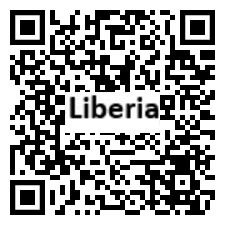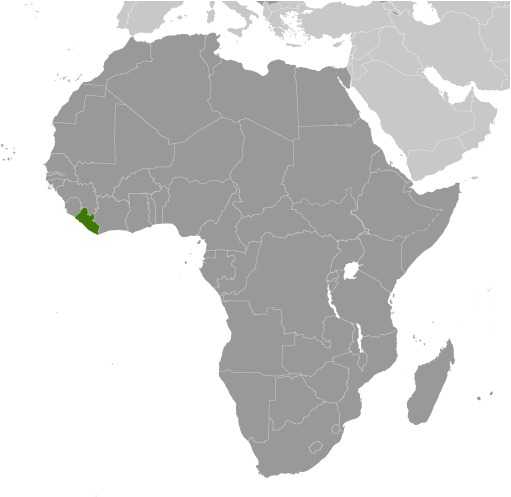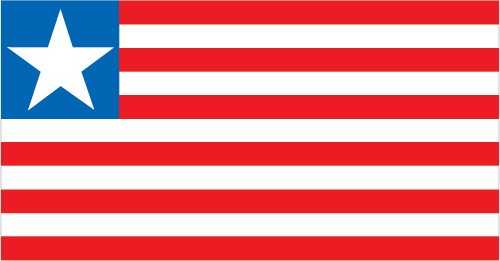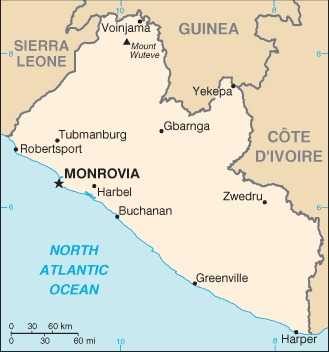Introduction
Background
Freed slaves from the US began being settled in what is today Liberia in 1822. By 1847, the Americo-Liberians were able to establish a republic. A military coup in 1980 ushered in a decade of authoritarian rule followed by a civil war. A 2003 peace agreement ended the war, and elections were held in 2005.
Geography
Area
total : 111,369 sq km
land: 96,320 sq km
water: 15,049 sq km
Climate
tropical; hot, humid; dry winters with hot days and cool to cold nights; wet, cloudy summers with frequent heavy showers
Natural resources
iron ore, timber, diamonds, gold, hydropower
People and Society
Population
total: 5,437,249
Ethnic groups
Kpelle 20.2%, Bassa 13.6%, Grebo 9.9%, Gio 7.9%, Mano 7.2%, Kru 5.5%, Lorma 4.8%, Krahn 4.5%, Kissi, 4.3%, Mandingo 4.2%, Vai 3.8%, Gola 3.8%, Gbandi 2.9%, Mende 1.7%, Sapo 1%, Belle 0.7%, Dey 0.3%, other Liberian ethnic group 0.4%, other African 3%, non-African 0.2% (2022 est.)
Languages
English 20% (official) and 27 indigenous languages, including Liberian English variants
Religions
Christian 84.9%, Muslim 12%, Traditional 0.5%, other 0.1%, none 2.6% (2022 est.)
Population growth rate
2.32% (2024 est.)
Government
Government type
presidential republic
Capital
name: Monrovia
Executive branch
chief of state: President Joseph BOAKAI (since 22 January 2024)
head of government: President Joseph BOAKAI (since 22 January 2024)
Legislative branch
summary: bicameral National Assembly consists of the Senate (30 seats) and the House of Representatives (73 seats)
Diplomatic representation in the US
chief of mission: Ambassador Jeff Gongoer DOWANA, Sr. (since 12 December 2022)
Diplomatic representation from the US
chief of mission: Ambassador (vacant) Chargé d'Affaires Catherine RODRIGUEZ (since 11 August 2023)
Economy
Economic overview
low-income West African economy; food scarcity, especially in rural areas; high poverty and inflation; bad recession prior to COVID-19 due to Ebola crisis; growing government debt; longest continuously operated rubber plantation; large informal economy
Real GDP (purchasing power parity)
$8.884 billion (2023 est.)
$8.484 billion (2022 est.)
$8.095 billion (2021 est.)
Real GDP per capita
$1,600 (2023 est.)
$1,600 (2022 est.)
$1,600 (2021 est.)
Exports
$1.22 billion (2022 est.)
$1.041 billion (2021 est.)
$731.658 million (2020 est.)
Exports - partners
Switzerland 28%, France 8%, Germany 8%, UK 8%, Poland 6% (2022)
Exports - commodities
gold, ships, iron ore, rubber, refined petroleum (2022)
Imports
$1.961 billion (2022 est.)
$1.739 billion (2021 est.)
$1.371 billion (2020 est.)
Imports - partners
China 42%, South Korea 23%, Japan 15%, Germany 5%, Brazil 3% (2022)
Imports - commodities
ships, refined petroleum, additive manufacturing machines, centrifuges, rice (2022)
Page last updated: Monday, September 09, 2024




